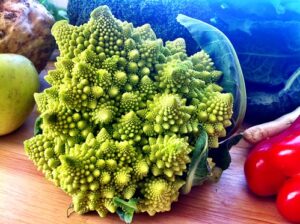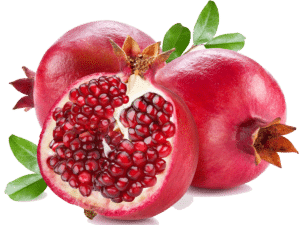Learn how to put a positive spin on diets and about two unique foods to add to your food list.
Subscribe to our YouTube Wellness Channel.
This year, I’ve decided to make a video once a month on different topics. All topics will focus on helping you to find peace with food and to be comfortable with who you are and what you eat.
I know a lot of you have probably made New Year’s resolutions. Some may want to lose or gain weight and others may want to get moving or do things a little differently with your diet. I never make New Year’s resolutions – I try to develop a new habit each year.
Let’s talk about diet. When you think about dieting, you often think about the foods you cannot eat – right? It seems the word “diet” has a negative connotation. Guess what? Dieting doesn’t have to mean a restrictive, gluten-free or diabetic diet. You can turn it into something positive.
Change your thought process about dieting. What if you made it fun? Try new foods, different flavors, add more fiber or spice up your meal with exotic fruits and vegetables.

This month, we’re talking about new foods – pomegranate and Romanesco. Both are great to include in your diet.
Romanesco
Romanesco, also referred to as Romanesco Broccoli, Fractal Broccoli, or Roman cauliflower is a cruciferous vegetable. It’s a cross between cauliflower and broccoli.
When selecting a Romanesco, look for a bright chartreuse or yellowish-green color. There should be no brown spots or discoloration. The stem should be heavy and firm, and the head very dense.
Romanesco can be eaten raw or cooked and prepared as you would broccoli or cauliflower – roasted, steamed or sautéed with garlic and olive oil. You can also stir-fry it and add it to pasta. When cooked, Romanesco has a nutty, earthy flavor. Try not to overcook it; once it gets mushy, it loses its flavor and color. Once your try it, Romanesco may become a staple in your diet.
To store fresh Romanesco, wrap it in a damp paper towel and put it in a plastic bag with a few holes so it can breathe. Use within a week.
Pomegranates
You may also want to add pomegranates to your diet. They originated in the Mediterranean. Most pomegranates grown in the United States come from California and are in season between September and February.
It’s messy getting to the pomegranate seeds, but worth it. Start by cutting the top off the pomegranate. Hold the fruit over a bowl and use a knife to cut down the ridges along the outside. Pull the sections back to expose more of the fruit. You can shake it to knock seeds loose or use a spatula to tap the outside. If there are still seeds left inside, use your fingers to get them out.
Use pomegranates in baking and cooking or to make juice. However, most people eat the seeds, known as arils. The seeds are crispy, crunchy and sweet and are delicious sprinkled on your food or mixed in yogurt or granola. Pomegranates are an excellent source of vitamin C, vitamin K, folate and fiber. They’re also a low-calorie food. A half cup of seeds equals about 80 calories. Pomegranates may make a great addition to your diet.
When you see a different type of fruit or vegetable in the grocery store, buy it. Do a little research about how to eat and prepare it. If you like it, add it to your grocery list. Try something new every month. That’s your new diet plan.
If you are interested in learning about more wonderful foods and recipes, read more of my nutrition articles.
